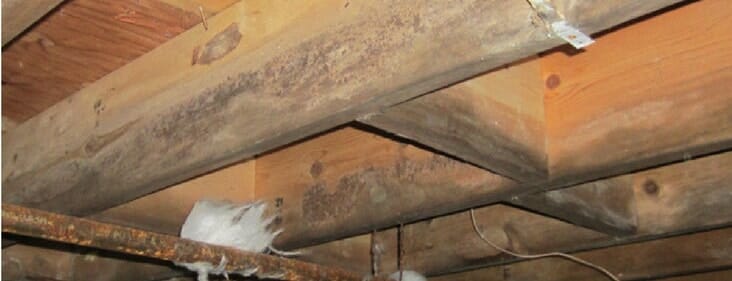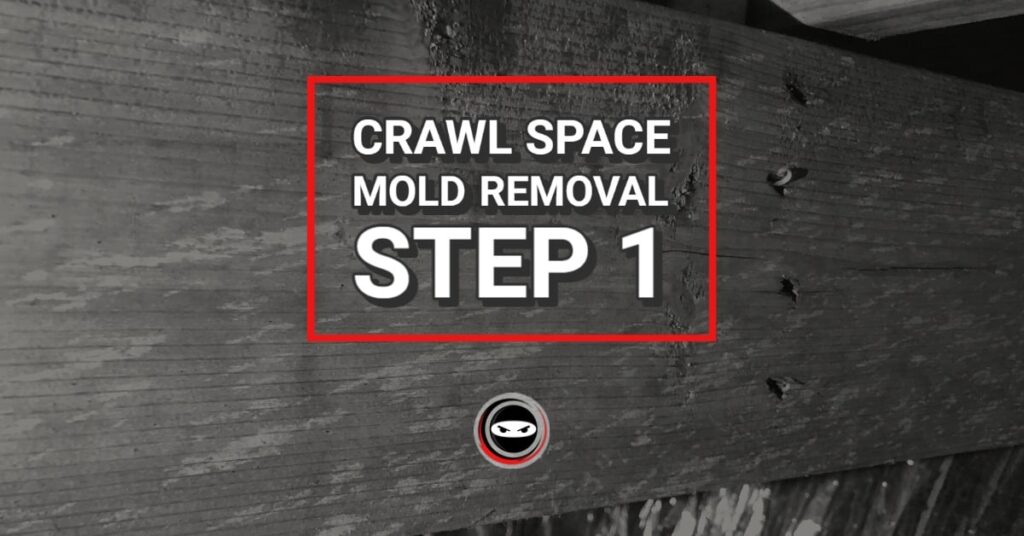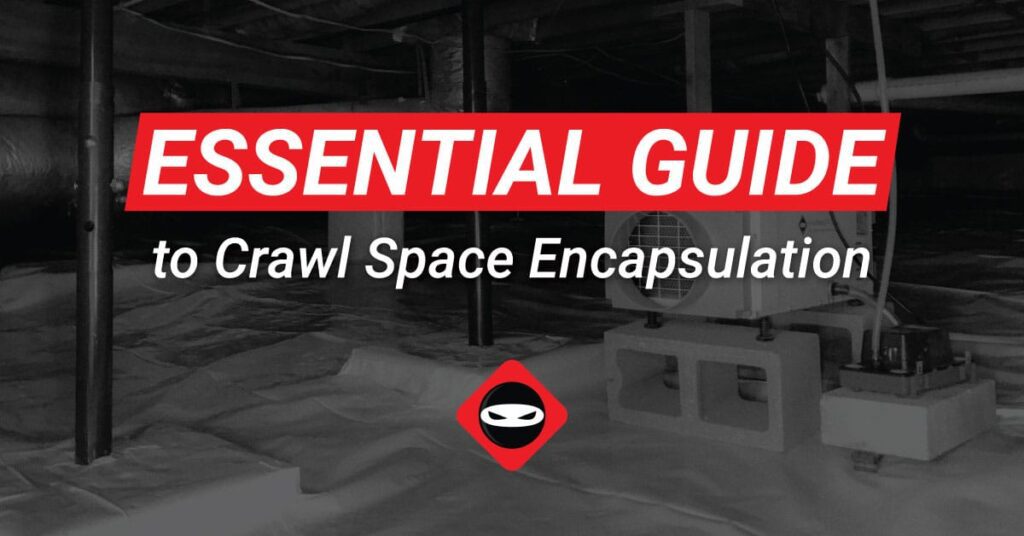Hey there! Are you a homeowner who’s been dealing with mold in your crawl space? Well, you’re in luck because in this article, we’re going to teach you how to remove mold from your crawl space yourself. It can be a daunting task, but with our step-by-step guide, you’ll have all the information you need to tackle this problem and make your home safe and mold-free again.
In this article, we’ll walk you through the entire process of removing mold from your crawl space. From identifying the signs of mold to preparing your space for treatment, we’ve got you covered. We’ll also discuss the different methods and products you can use to effectively remove mold, as well as tips for preventing it from coming back in the future. So, if you’re ready to roll up your sleeves and take on this challenge, keep reading because we’ve got all the information you need to get started.
Understanding Mold in Crawl Spaces
Mold is a type of fungi that thrives in damp and humid environments. It can grow virtually anywhere, including crawl spaces. Crawl spaces are vulnerable to mold growth due to their dark, damp, and poorly ventilated conditions. Mold in crawl spaces can pose a serious threat to your home and your health. In this guide, we will discuss the dangers of mold in crawl spaces, how to assess the situation, prepare for mold removal, the step-by-step process of removing mold, treating and preventing recurrence, dealing with large infestations, maintaining a healthy crawl space, health risks, alternative remediation methods, and the importance of addressing mold to ensure a safe and healthy home environment.
What is Mold?
Before we dive into the specifics of mold in crawl spaces, let’s first understand what mold is. Mold is a type of fungi that reproduces by releasing spores into the air. It can come in various colors, such as black, green, or white, and gives off a musty odor. Mold thrives in environments with moisture, which is why crawl spaces are ideal breeding grounds for mold.

Why Does Mold Grow in Crawl Spaces?
Crawl spaces are often neglected areas of the home, with limited ventilation and insulation. This lack of airflow, combined with high humidity levels, creates the perfect conditions for mold growth. Moisture can easily accumulate in crawl spaces due to factors like groundwater seepage, condensation, or plumbing leaks. When moisture is present, mold spores can settle on surfaces and begin to grow, leading to a full-blown mold infestation.
The Dangers of Mold in Crawl Spaces
Mold in crawl spaces can have serious consequences for both your home and your health. Firstly, it can cause significant structural damage. Mold can eat away at wood, causing it to rot and weaken over time. This can compromise the integrity of your home’s foundation and support beams. Additionally, mold growth can lead to unpleasant odors and unsightly stains in your crawl space, which can be difficult to remove.
Moreover, mold poses health risks to those living in the home. Mold spores can become airborne and be inhaled, leading to respiratory issues such as allergies, asthma, and chronic sinusitis. Some individuals may also experience skin irritation, coughing, and sneezing when exposed to mold. It is especially important to address mold in crawl spaces to ensure the well-being of your family.

Assessing the Mold Situation
Before diving into the mold removal process, it is essential to assess the extent of the mold problem in your crawl space. Identifying signs of mold growth and understanding the common causes can help you gauge the severity of the infestation and take appropriate measures.
Identifying Signs of Mold in Crawl Spaces
To identify mold in your crawl space, look out for visible signs such as dark spots or patches on surfaces, musty odors, or a high humidity smell. You may also notice an increase in allergy symptoms or respiratory issues among family members. Conduct regular inspections to catch mold growth early before it spreads and becomes more challenging to remove.
Determining the Extent of the Mold Problem
Once you have identified mold growth in your crawl space, you need to determine the extent of the problem. This will help you plan the appropriate course of action and allocate the necessary resources. Consider the size of the affected area and the severity of the mold infestation. If the mold covers a large area or if you suspect it has spread to other parts of your home, it may be best to seek professional help.
Common Causes of Mold Growth in Crawl Spaces
Understanding the common causes of mold growth in crawl spaces can help you prevent future infestations. Some of the most common causes include:
-
Poor ventilation: Inadequate airflow allows moisture to accumulate in the crawl space, providing an ideal environment for mold growth.
-
High humidity levels: Excessive moisture can enter the crawl space through groundwater seepage, condensation, or plumbing leaks.
-
Insufficient insulation: Lack of insulation can lead to temperature imbalances, causing condensation to form and promote mold growth.
Preparation and Safety Measures
Before you start the mold removal process, it is crucial to gather the necessary tools and materials, wear proper protective gear, and ensure proper ventilation and air circulation in the crawl space.
Gathering the Necessary Tools and Materials
To effectively remove mold from your crawl space, you will need the following tools and materials:
- Mold remediation products (such as fungicides or mold inhibitors)
- Safety goggles
- N95 respirator mask
- Disposable gloves
- Protective clothing (coveralls or old clothes that can be disposed of)
- Sturdy trash bags for disposing of contaminated materials
- Scrub brushes and sponges
- Plastic sheeting to isolate the affected area
- Wet/dry vacuum or a portable fan for drying the crawl space
Ensure that you have all the required items on hand before starting the mold removal process.
Wearing Proper Protective Gear
Mold can release harmful spores into the air during the removal process, so protective gear is essential. Wear safety goggles to protect your eyes from irritants. Use an N95 respirator mask to filter out airborne particles and prevent inhalation of mold spores. Disposable gloves and protective clothing will help minimize skin contact with mold and prevent cross-contamination.
Ensuring Proper Ventilation and Air Circulation
Before you begin removing mold from your crawl space, ensure proper ventilation and air circulation. Open windows and doors to allow fresh air to enter the crawl space. Consider using fans or dehumidifiers to improve air circulation and prevent moisture buildup. Proper ventilation will help dissipate mold spores and reduce the risk of inhaling them during the removal process.

Step-by-Step Mold Removal Process
Now that you have assessed the mold situation, gathered the necessary tools, and taken proper safety precautions, it’s time to proceed with the mold removal process. Follow these step-by-step instructions to remove mold from your crawl space effectively.
Isolating the Affected Area
To prevent the spread of mold spores to other areas of your home, it is crucial to isolate the affected area in your crawl space. Cover openings and vents with plastic sheeting or tape to create a containment barrier. This will help confine the mold spores and prevent them from entering the living areas of your home.
Removing Any Contaminated Materials
Identify and remove any contaminated materials in the crawl space. This may include insulation, drywall, wood, or other porous materials that have been affected by mold growth. Place these materials in sturdy trash bags and seal them tightly for proper disposal. Be cautious while handling the contaminated materials to minimize the release of mold spores.
Cleaning the Crawl Space Thoroughly
Once you have removed all the contaminated materials, it’s time to clean the crawl space thoroughly. Use a scrub brush or sponge and a mold remediation product to clean all surfaces affected by mold. Pay special attention to corners, crevices, and areas with visible mold growth.
After cleaning, use a wet/dry vacuum or portable fan to dry the crawl space. Ensure that the space is completely dry before proceeding with the next steps. This will prevent future mold growth due to moisture accumulation.
Treating and Preventing Mold Recurrence
After removing the mold from your crawl space, it is crucial to take preventive measures to inhibit mold growth and prevent recurrence. Follow these steps to ensure a mold-free crawl space.
Applying Mold Inhibitors and Disinfectants
After cleaning the crawl space, apply mold inhibitors or disinfectants to kill any remaining mold spores and prevent their regrowth. Consult with a professional or refer to the instructions on the product to choose an appropriate mold inhibitor or disinfectant for your crawl space.
Implementing Moisture Control Measures
One of the most effective ways to prevent mold recurrence is to address the underlying moisture issues in your crawl space. Inspect for any plumbing leaks, foundation cracks, or groundwater seepage and fix them promptly. Ensure that the crawl space is properly insulated to prevent condensation. Consider installing a vapor barrier to further protect against moisture infiltration.
Sealing and Waterproofing the Crawl Space
To prevent moisture from entering the crawl space, seal any cracks or gaps in the walls, floors, or foundation. Use weatherstripping or caulk to seal openings around pipes, vents, and utility penetrations. Consider waterproofing the crawl space by applying a waterproof sealant or using a specialized crawl space encapsulation system. These measures will help create a moisture-resistant barrier and reduce the risk of future mold growth.

Dealing with Large Mold Infestations
In some cases, the mold infestation in your crawl space may be severe or widespread, making it difficult to handle on your own. Knowing when to seek professional help is crucial to ensure effective and safe mold removal.
When to Seek Professional Help
Consider seeking professional help in the following situations:
- The mold covers a large area and extends beyond the crawl space.
- You suspect that the mold is toxic or black mold, which requires specialized removal techniques.
- You have underlying health conditions that can be exacerbated by exposure to mold.
- You are unable to access or navigate the crawl space safely.
Hiring Qualified Mold Remediation Experts
When hiring mold remediation experts, ensure that they are experienced, licensed, and certified. Look for companies or professionals specializing in crawl space mold removal. Ask for references and inquire about their previous work. A reputable mold remediation expert will assess the extent of the mold problem, provide a detailed plan of action, and safely remove the mold from your crawl space.
Understanding the Potential Costs and Benefits
Professional mold remediation can be costly, especially for larger infestations or when additional repairs are required. However, it is essential to weigh the potential costs against the benefits. Proper mold removal conducted by experts can ensure a thorough and lasting solution to your crawl space mold problem. It can also help protect your home’s structural integrity and the health of your family.
Maintaining a Healthy Crawl Space
Once you have successfully removed the mold from your crawl space, it is crucial to maintain a healthy environment to prevent future mold growth. Follow these maintenance tips to keep your crawl space mold-free.
Regular Inspections and Maintenance
Regularly inspect your crawl space for signs of moisture or mold growth. Conduct thorough inspections at least once a year, especially during seasons with increased humidity or heavy rainfall. Address any plumbing leaks, drainage issues, or foundation cracks promptly to prevent moisture from entering the crawl space.
Addressing Any Sources of Excess Moisture
Preventing excess moisture is crucial to maintaining a healthy crawl space. Make sure your home has proper drainage systems to redirect water away from the foundation. Grade the landscape around your home to prevent water from pooling near the crawl space. Consider installing a sump pump to remove excess water from the crawl space if necessary.
Improving Ventilation and Air Quality
Improve ventilation and air quality in your crawl space by providing adequate airflow. Ensure that vents are clear of debris and open, allowing air to circulate. Consider installing vent fans or dehumidifiers to regulate humidity levels and prevent condensation. Good ventilation and air quality will help keep the crawl space dry and inhibit mold growth.

Health Risks and Precautions
Mold exposure can pose health risks, especially for individuals with respiratory conditions or compromised immune systems. While removing mold from your crawl space, it is important to take precautions to protect yourself and your family.
Potential Health Effects of Mold Exposure
Exposure to mold can cause various health issues, including allergic reactions, asthma attacks, respiratory infections, and skin irritation. Individuals with existing respiratory conditions or compromised immune systems are particularly vulnerable to these effects. If you or your family members experience persistent allergy symptoms, coughing, wheezing, or skin irritation, seek medical attention and consider getting your crawl space inspected for mold.
Protecting Yourself During the Removal Process
When removing mold, always wear proper protective gear, including safety goggles, an N95 respirator mask, disposable gloves, and protective clothing. Minimize the release of mold spores by wetting the affected area before scrubbing or cleaning. Seal the area being cleaned to prevent cross-contamination with the rest of your home. Dispose of contaminated materials properly to avoid spreading mold spores.
Seeking Medical Attention if Necessary
If you or your family members experience severe or persistent health issues related to mold exposure, seek medical attention immediately. A healthcare professional can help diagnose and treat any symptoms caused by mold exposure. In some cases, it may be necessary to consult with an allergist or respiratory specialist for specific treatment or management strategies.
Alternative Mold Remediation Methods
If you prefer natural or eco-friendly mold removal methods or want to try DIY options, here are a few alternatives to consider.
Natural and Eco-Friendly Mold Removal Options
Natural and eco-friendly mold removal options often involve using ingredients like vinegar, hydrogen peroxide, or tea tree oil. These substances can help kill mold and inhibit its growth. However, they may not be as effective as commercial mold remediation products. If you choose to use natural methods, thoroughly research the proper application and safety precautions before proceeding.
Using DIY Mold Removal Products
You can find various DIY mold removal products available in the market. These products typically include mold disinfectants or cleaners that are specifically formulated for homeowners. Follow the instructions provided with the product and take the necessary safety precautions. Keep in mind that DIY products may not be as effective as professional-grade mold remediation products.
Exploring Professional Mold Prevention Techniques
Some professionals specialize in mold prevention techniques that can help inhibit future mold growth. These techniques may include crawl space encapsulation, which involves sealing the crawl space with a vapor barrier to prevent moisture intrusion. If you are concerned about mold recurrence, consult with a professional to explore these preventive measures.
Conclusion
Removing mold from your crawl space is an essential step in ensuring a safe and healthy home environment. By understanding the dangers of mold, assessing the mold situation, preparing properly, and following a step-by-step mold removal process, you can effectively eliminate mold from your crawl space. Taking preventive measures and maintaining a healthy crawl space will further reduce the risk of future mold growth. If dealing with a large mold infestation or facing health risks, it is best to seek professional help. By addressing mold in your crawl space promptly and proactively, you can enjoy a mold-free and healthy home for years to come.